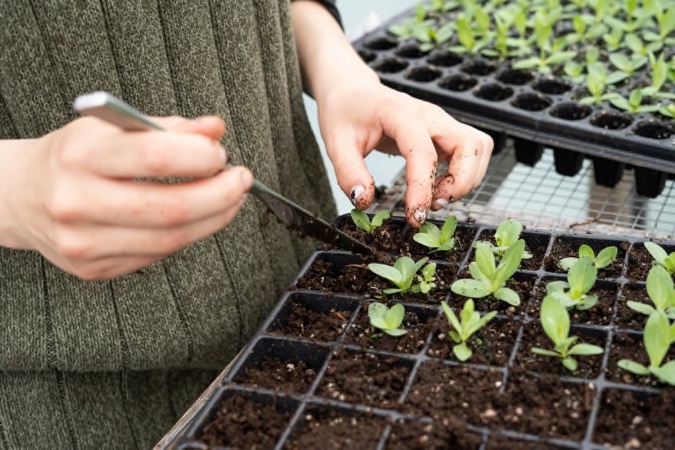Buckled up to flip your garden into a blooming paradise? Growing plants sounds easy but hey, we are not talking about a well cut bouquet delivery at your doorstep. We are talking about the complete process from sowing seeds to harvesting the flowers, seeds, or fruit.


Whether you are a seasonal gardener or a novice, you are bound to encounter complexities and obstacles.
Making decisions about your garden should be well thought out and informed. As you decide the seeds you want to plant, all sorts of whats and hows pop into your mind…
What is the best season to plant?
Should I sow them deep or shallow?
Should you Directly Sow or Transplant?
Ok, Relax!
We’ll help you make sense of all the confusion bubbling up within your subconscious mind. Today, We’ll find the ideal solution to planting your garden.
Understand The Basics
Sowing
Sowing is the act of planting the seeds into the ground or containers directly. The seeds germinate and flourish into beautiful and lively plants. Many fruits, vegetables and flowers grow well by sowing their seeds, buds, bulbs, or more.


Pros:
- Sowing the seeds is rather cost-effective as compared to buying the seedlings
- It allows you the pleasure to choose from a wider selection of plant varieties.
- Sowing allows better control of the growing process, from seeding to harvesting.
Cons:
- Seeds take much longer to grow and thrive into mature plants.
- Seeds are vulnerable to harsh or humid weather conditions like heavy rains or heat waves.
- Seeds might need thinning to avoid overcrowding and ensure healthy growth.
Transplanting
Transplanting is the process in which you initiate the seeds indoors and then move them to their growing patch. You can also buy the seedlings directly and plant them in designated places for faster growth.


Pros:
- Transplanting allows you to enjoy faster results. The plant matures sooner than sowing seeds.
- Seedlings are resilient as compared to sensitive seeds and therefore can survive well in harsh weather conditions.
- Reduced the instances of crop failure due to late initiation of seeds.
Cons:
- Transplanting is costly since seedlings are expensive. Even if you initiate the seeds indoors, you need a whole kit of indoor growing supplies.
- Seedlings are not available for all plants making the selection window narrower.
- If not done carefully, transplanting seedlings from indoors to outdoors may cause environmental stress or transplant shock.
Selecting the Right Method for Your Garden
Now that you understand both methods, It all boils down to which method is best for your garden. Here are the main factors that you must consider:
Budget:
Budget tops off the list if we stay practical. As a first step, Set aside a budget that you can easily invest in your garden. As we have already discussed, sowing is more budget-friendly while transplanting needs additional indoor supplies for starting the seeds.
Time:
Time matters when planting the seeds. If you are urgently looking to grow a plant, transplanting will be your best option even if it is a bit expensive. However, if you wish to take your sweet time and enjoy watching your plants grow step by step, Sowing is your ideal choice.
Space:
Analyse how much space you have in your garden. Use the aid of a rubbish disposal service to clear out the messy areas if needed and expand the garden area to make space for new plants. Transplanting requires indoor space for trays and pots until they are good to be exported outdoors.
Climate:
The usual climate condition of your region matters a lot when it comes to growing plants. For locations with unpredictable weather and brief growing seasons, transplanting is more reliable to start your garden.
Conclusion
Now it is in your hands to see which method will fit better with your convenience. Whether you choose transplanting or sowing, both have their own merits and demerits. We hope our article will help you make an informed decision and help you understand your garden better than before.
Remember the factors we have discussed and decide carefully. Make your choice and enjoy your garden growing each day.
